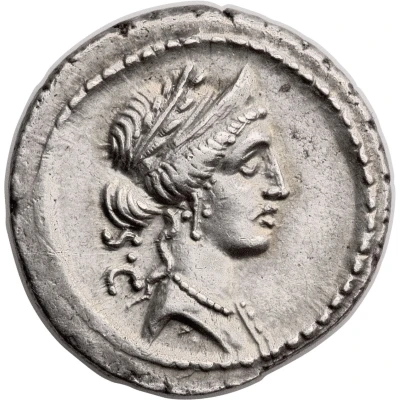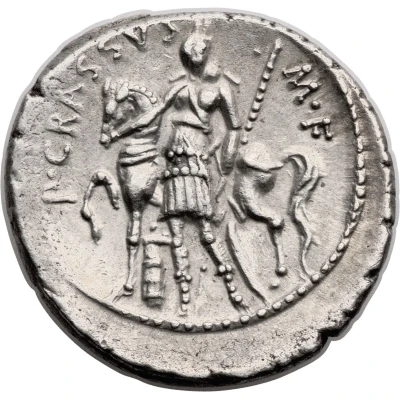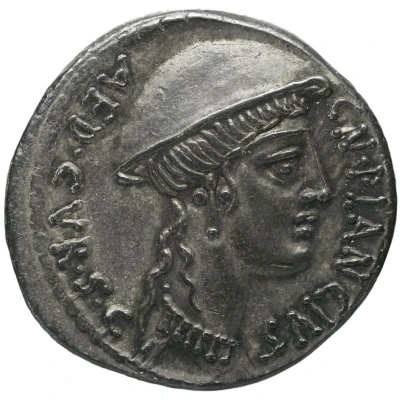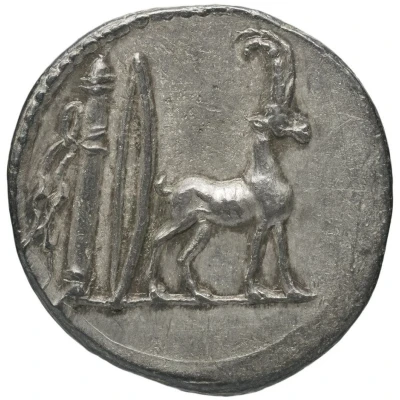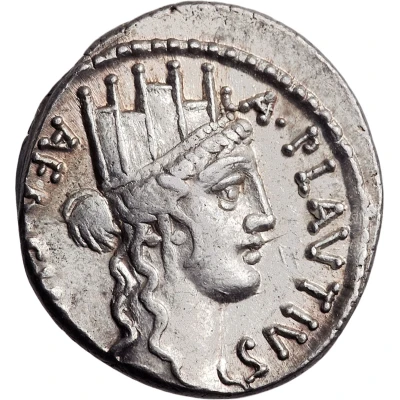
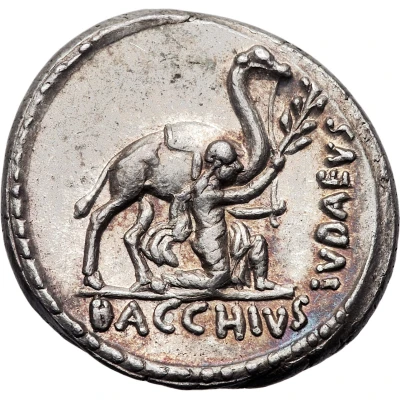

© Heritage Auctions
Denarius Plautia: Aulus Plautius; A•PLAVTIVS AED•CVR•S•C / BACCHIVS IVDAEVS 55 BC
55 BC year| Silver | 4.19 g | 18 mm |
| Issuer | Rome › Roman Republic (509 BC - 27 BC) |
|---|---|
| Period | Republic (509 BC - 27 BC) |
| Type | Standard circulation coin |
| Year | 55 BC |
| Value | Denarius (1) |
| Currency | Denarius of 16 Asses (141 – 27 BC) |
| Composition | Silver |
| Weight | 4.19 g |
| Diameter | 18 mm |
| Shape | Round (irregular) |
| Technique | Hammered |
| Orientation | Variable alignment ↺ |
| Demonetized | Yes |
| Updated | 2024-10-06 |
| Numista | N#66709 |
|---|---|
| Rarity index | 87% |
Reverse
Camel right; before, kneeling figure (perhaps Aristobulus of Judaea) holding reins in left hand and olive-branch in right hand raised; in exergue and right field, inscription.
Border of dots.
Script: Latin
Lettering: BACCHIVS IVDAEVS
Unabridged legend: Bacchius Iudaeus
Translation: Bacchius the Jew
Edge
Plain
Comment
The gens Plautia was a plebeian family.The 'Bacchius the Jew' shown kneeling on supplication on the reverse of this piece is almost certainly Judah Aristobulus II, who attempted to usurp the throne of Judea from his brother John Hyrcanus II between 67 and 63 BC. Pompey the Great sided with Hyrcanus and subjected Jerusalem to a brutal siege and sacking to depose the usurper Aristobulus. Forced to kneel in submission to Pompey, Aristobulus was permitted to live as a hostage in Rome, but later escaped and tried to resume the throne, only to be thwarted again by Pompey's lieutenant M. Aemilius Scaurus. The term 'Bacchius' may refer to the Roman misconception that Hellenized Jews like Aristobulus worshipped Dionysus, whom the Romans knew as Bacchus.
Interesting fact
The Denarius coin features an image of Bacchus, the Roman god of wine, on its reverse side. This is significant because it suggests that the coin was minted during a time when the Roman Republic was expanding its influence and trade networks, as Bacchus was often associated with the importation of foreign goods and the spread of Roman culture. Additionally, the image of Bacchus on the coin may have been intended to promote the idea of Roman prosperity and abundance, as he was also associated with fertility and the harvest.
Price
| Date | Mintage | VG | F | VF | XF | AU | UNC |
|---|---|---|---|---|---|---|---|
| ND (-55) | - | - | - | - | - | - |
Values in the table are based on evaluations by sales realized on Internet platforms. They serve as an indication only for Denarius (Plautia: Aulus Plautius; A•PLAVTIVS AED•CVR•S•C / BACCHIVS IVDAEVS) (55 BC) coin.
